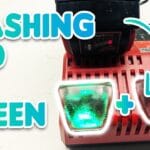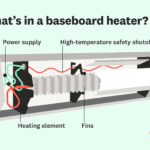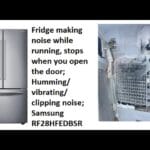Owning a pool can be a joy, but maintenance can be tricky. The Hayward Aqua Rite salt chlorinator is a popular choice for pool owners.
But what happens when it doesn’t work correctly? Understanding common issues with the Aqua Rite can save you time and frustration. This guide will walk you through troubleshooting tips to keep your pool clean and clear. With a bit of know-how, you can resolve most problems on your own.
From error codes to salt levels, we’ll cover the basics. By the end of this post, you’ll be better equipped to handle any Aqua Rite issue. Let’s dive into the solutions for a smoother pool season.
Common Issues
The Hayward Aqua Rite is a reliable system for pool chlorination. Yet, it can face certain issues over time. Identifying these common issues helps ensure your system runs smoothly. Below, we discuss some frequent problems and how to troubleshoot them.
Salt Level Problems
One common issue with the Hayward Aqua Rite system is incorrect salt levels. The system may display a low salt or high salt warning. Both can affect the efficiency of your pool chlorination.
To fix low salt levels:
- First, check the salt level using a reliable salt test kit.
- If low, add the recommended amount of salt to the pool.
- Retest the salt level after 24 hours to ensure accuracy.
To fix high salt levels:
- First, verify the salt level using a test kit.
- If high, drain a portion of the pool water.
- Refill the pool with fresh water and retest the salt level.
Flow Sensor Errors
Another common issue is the flow sensor error. This error indicates that the system is not detecting adequate water flow.
To troubleshoot flow sensor errors:
- Ensure the pool pump is running and water is circulating properly.
- Check the filter and clean it if necessary.
- Inspect the flow sensor for debris or blockages.
- If the problem persists, consider replacing the flow sensor.
Proper maintenance of the flow sensor ensures the efficient operation of your Hayward Aqua Rite system.
Addressing these common issues promptly can save time and money. Regular checks and maintenance will keep your pool water clean and safe.
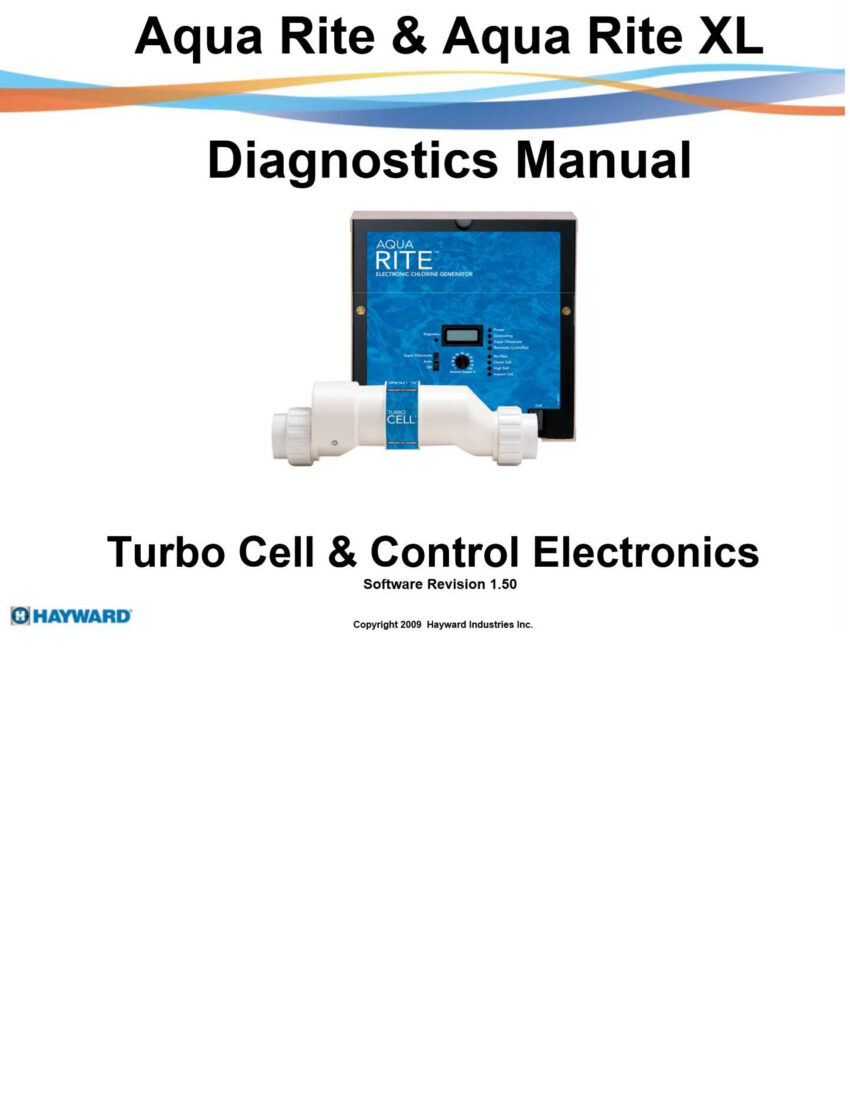
Credit: www.poolwarehouse.com
Diagnostic Tools
Maintaining your Hayward Aqua Rite system can seem overwhelming. Diagnostic tools help ease this process. They aid in identifying issues quickly. Understanding these tools ensures your system runs smoothly.
Control Panel Indicators
The control panel provides key information. It includes various indicators that show the system’s status. These indicators help pinpoint issues early on.
| Indicator | Status | Description |
|---|---|---|
| Power | On/Off | Shows if the system is receiving power |
| Generating | On/Off | Indicates if chlorine is being produced |
| Check Salt | On/Off | Alerts to low salt levels |
| Inspect Cell | Blinking | Indicates the cell needs inspection |
Diagnostic Codes
Diagnostic codes are crucial for troubleshooting. These codes appear on the control panel. They represent specific issues within the system.
- Code 121: Low voltage
- Code 123: High current
- Code 125: Cell needs replacement
Refer to the system’s manual for a complete list of codes. Understanding these codes helps you act swiftly. It ensures minimal disruption to your pool’s operation.
Water Chemistry
Proper water chemistry is vital for the Hayward Aqua Rite system to function effectively. Ensuring balanced water chemistry helps avoid common issues and extends the lifespan of your equipment.
Balancing Ph Levels
Maintaining the correct pH level is crucial. The ideal pH range is 7.2 to 7.6. A balanced pH ensures effective chlorine production. Use a reliable test kit to check pH levels frequently.
If the pH is too high, add a pH reducer. If it’s too low, add a pH increaser. Always adjust pH levels gradually to avoid large fluctuations.
Correct Salt Concentration
The Aqua Rite system requires a specific salt concentration. The optimal range is 2700 to 3400 ppm (parts per million). Too little salt and chlorine production decreases. Too much salt can damage the cell.
To measure salt levels, use a digital salt tester. Add salt according to your pool’s size and the system’s requirements. Spread the salt evenly around the pool and let the pump run to mix it thoroughly.
Flow Rate Problems
Flow rate issues can significantly impact the performance of your Hayward Aqua Rite system. Understanding the root cause is crucial. Addressing these problems promptly ensures your pool remains clean and safe. This section covers common flow rate problems and their solutions.
Blocked Filters
Blocked filters reduce water flow through the system. This can cause low flow rate issues. Regularly check and clean your filters. Follow these steps to troubleshoot blocked filters:
- Turn off the pump.
- Remove the filter cartridge.
- Rinse the cartridge with a garden hose.
- Inspect for damage. Replace if needed.
Keeping the filters clean maintains optimal flow rate and improves system efficiency.
Pump Malfunctions
Pump malfunctions can also lead to flow rate problems. Here are some common pump issues and solutions:
| Issue | Solution |
|---|---|
| Air in the pump | Check for leaks in the suction line. Tighten any loose connections. |
| Clogged impeller | Turn off the pump. Remove debris from the impeller. |
| Worn-out pump motor | Replace the motor if it shows signs of wear. |
Ensure your pump is functioning properly. This will help maintain a consistent flow rate. Regular maintenance and inspections can prevent pump malfunctions. This keeps your pool system running smoothly.
Cell Maintenance
Maintaining the cell in your Hayward Aqua Rite system is crucial. Proper care ensures it functions efficiently. This guide covers cleaning and replacing the cell. Follow these steps to keep your system in top shape.
Cleaning The Cell
Regular cleaning of the cell is essential. It prevents scale buildup and maintains performance. Here’s a simple process:
- Turn off the power to the Aqua Rite system.
- Remove the cell from the plumbing.
- Inspect the cell for any visible debris or scale.
- Prepare a cleaning solution of one part muriatic acid to four parts water.
- Pour the solution into the cell. Let it soak for 15 minutes.
- Rinse the cell thoroughly with clean water.
- Reinstall the cell and turn the power back on.
Perform this cleaning every 3-6 months. More frequent cleanings may be necessary in hard water areas.
Replacing The Cell
Over time, the cell will wear out and need replacement. Signs of a failing cell include:
- Low chlorine production.
- “Inspect Cell” warning light remains on.
- Visible damage or heavy scaling on the cell.
To replace the cell, follow these steps:
- Turn off the power to the Aqua Rite system.
- Remove the old cell from the plumbing.
- Inspect the new cell for any shipping damage.
- Install the new cell in the same orientation as the old one.
- Reconnect any wiring and ensure all connections are secure.
- Turn the power back on and check for proper operation.
Replacing the cell can restore your system’s efficiency. It ensures optimal chlorine production. Keep an eye on your system and maintain a regular cleaning schedule to prolong the life of your cell.
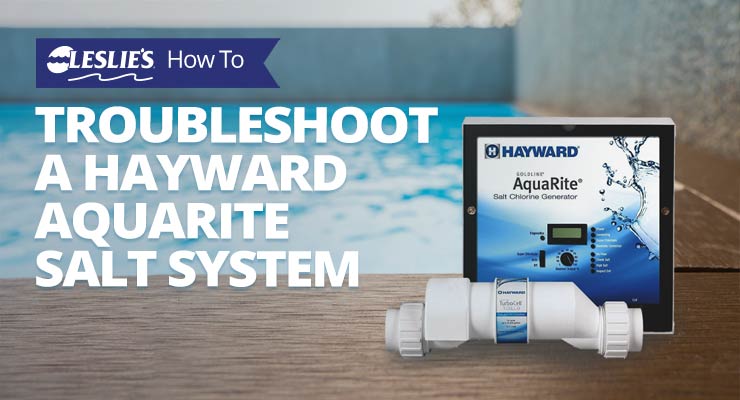
Credit: lesliespool.com
Power Supply Issues
Power supply issues can disrupt the performance of your Hayward Aqua Rite system. A stable power supply is crucial for the system to function correctly. Problems with the power supply can lead to the unit not turning on or inconsistent operation. This section will guide you through common power supply issues and how to troubleshoot them.
Checking Connections
First, inspect all electrical connections. Loose or corroded connections can cause power issues. Ensure that all wires are securely connected and free from corrosion. Check both the power supply and the control panel connections.
Use a screwdriver to tighten any loose connections. Disconnect the power before working on the system. After reconnecting, power on the unit and check if the issue persists.
Voltage Requirements
The Hayward Aqua Rite system requires a specific voltage to operate correctly. Verify that your power supply meets these voltage requirements. An incorrect voltage can cause the system to malfunction.
Use a multimeter to measure the voltage supplied to the unit. The ideal voltage range should be specified in the user manual. If the voltage is outside this range, consult an electrician.
Software Updates
Keeping your Hayward Aqua Rite system up to date is crucial for optimal performance. Regular software updates can fix bugs, introduce new features, and enhance system reliability. This section provides comprehensive guidance on managing software updates for your Aqua Rite system.
Firmware Upgrades
Firmware upgrades are essential for maintaining the efficiency of your Aqua Rite system. To check for the latest firmware, visit the Hayward official website and navigate to the support section.
- Download the latest firmware version for your model.
- Ensure your system is powered down before beginning the upgrade.
- Connect your system to your computer via the designated port.
- Follow the on-screen instructions to complete the installation.
After upgrading, restart the system to apply the changes. This process helps resolve potential issues and improves functionality.
Resetting The System
If you face issues after a firmware upgrade, a system reset might be necessary. Resetting your Aqua Rite system can resolve minor glitches and restore default settings.
- Turn off the power to the system.
- Press and hold the reset button for 10 seconds.
- Release the button and turn the power back on.
This simple reset can often fix common problems and improve system stability.
Professional Help
Even with the best troubleshooting efforts, sometimes your Hayward Aqua Rite pool system needs professional help. Knowing when to call a technician can save time and prevent further damage. Choosing a reliable service is also crucial for long-term peace of mind.
When To Call A Technician
If your Aqua Rite system shows persistent issues, it may be time to call a technician. Repeated error codes or system shutdowns often signal deeper problems. Strange noises or leaks also require expert attention. Attempting to fix these issues on your own can make things worse.
Additionally, if you lack experience with pool systems, professional help is advisable. Technicians have the tools and knowledge to diagnose and repair your Aqua Rite system accurately. They can also offer maintenance tips to prevent future issues.
Choosing A Reliable Service
Finding a trustworthy technician ensures your pool system receives the best care. Start by asking for recommendations from friends or family. Online reviews can also provide insights into the service quality. Look for technicians with certifications and experience with Hayward products.
Always ask for a detailed estimate before any work begins. This helps you understand the costs involved and avoid surprises. Reliable services often offer warranties on their work, giving you extra peace of mind. Choose a service that communicates clearly and responds promptly to your inquiries.
Credit: forum.inyopools.com
Frequently Asked Questions
How Do I Reset My Hayward Aqua Rite?
Press and hold the “Diagnostics” button for 3 seconds. This will reset the system.
Why Is My Hayward Aqua Rite Not Generating Chlorine?
Check the salt level. Ensure it is between 2700-3400 ppm. Clean the cell if needed.
What Does “check Salt” Light Mean On Aqua Rite?
This light means low salt levels. Add salt to the pool as per manual instructions.
How Often Should I Clean My Aqua Rite Cell?
Clean the cell every 3-6 months. This helps maintain efficiency and prolongs its life.
What Is The Ideal Salt Level For Hayward Aqua Rite?
The ideal salt level is between 2700-3400 ppm. Always maintain this range for best performance.
Conclusion
Troubleshooting your Hayward Aqua Rite can seem daunting, but it’s manageable. Follow the steps outlined for each issue. Ensure regular maintenance to prevent problems. Keep an eye on salt levels and inspect the cell. Simple checks can save you time and money.
If problems persist, contact a professional. Your pool should be clean and safe for everyone. Enjoy your swimming experience without stress. Happy swimming!


